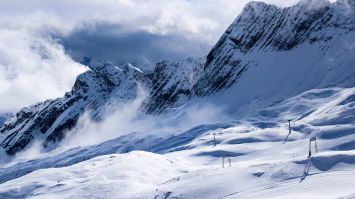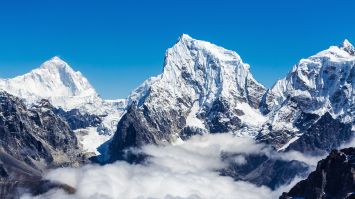Roof of the World: The Pamir Mountains are famously known as the “Roof of the World”, also called “Bam-i-Duniya” in Persian. Located in Central Asia, mainly within Tajikistan, and extending into Afghanistan, China, and Kyrgyzstan, the Pamirs form one of the highest plateaus on Earth. This vast mountainous region connects several major ranges; the Himalayas, Karakoram, Hindu Kush, Kunlun, and Tian Shan.
Why Are the Pamir Mountains Called the Roof of the World?
The Pamir Mountains are called the Roof of the World because they form the central meeting point of the highest mountain ranges in Asia. The average elevation of the Pamir Plateau is over 4,000 metres (13,000 feet), with several peaks exceeding 7,000 metres (23,000 feet). The Persian term “Bam-i-Duniya” literally translates to “Roof of the World”, a name that reflects both its breathtaking altitude and its position as the geographical heart of Asia. Early explorers, traders, and travellers along the Silk Road used this title to describe the vast highlands where the sky seems closest to Earth.
Where Are the Pamir Mountains Located?
The Pamir Mountains are located primarily in eastern Tajikistan, stretching into parts of Afghanistan, China (Xinjiang region), and Kyrgyzstan. The region’s core lies in the Gorno-Badakhshan Autonomous Province of Tajikistan. Valleys such as the Wakhan Corridor in Afghanistan and the Murghab Plateau in Tajikistan are key features of this region. The Pamirs’ unique geography places them at the crossroads of Central and South Asia, making them a vital link between the world’s highest mountain systems.

What Is the Highest Peak in the Pamir Mountains?
The highest peak in the Pamirs is Ismoil Somoni Peak (formerly Communism Peak), which rises to 7,495 meters (24,590 feet) above sea level. It is named after Ismoil Somoni, the founder of the first Persian Empire in Central Asia. Other notable summits include Independence Peak (7,134 meters) and Kaufman Peak (6,723 meters). These towering peaks dominate the skyline and make the Pamirs one of the most elevated regions on Earth.
Historical Background of the Name “Roof of the World”
The title “Roof of the World” or “Bam-i-Duniya” dates back centuries and was widely used by Persian and Central Asian travelers. In the 19th century, Western explorers and geographers adopted the term to describe the Pamir Plateau’s remarkable elevation and remoteness. This region was seen as the center of Asia’s mountain systems, where vast ranges converge, and rivers originate. The name reflects both its physical grandeur and its symbolic significance as the highest, most remote part of the continent.
Climate and Geography of the Pamirs
The Pamir Mountains have a severe alpine climate, characterized by long, cold winters and short, mild summers. In winter, temperatures can drop below -40°C, and many valleys remain covered in snow year-round. The Pamirs are also home to the Fedchenko Glacier, the largest glacier outside the polar regions, stretching more than 77 kilometers in length. The combination of icy peaks, glacial valleys, and high-altitude deserts creates one of the most dramatic and challenging environments on Earth.

Interesting Facts About the Pamir Mountains
1.Bam-i-Duniya
The Persian name “Bam-i-Duniya” perfectly captures the region’s identity as one of the highest inhabited areas on Earth, surrounded by peaks that seem to touch the heavens.
2.Meeting Point of Great Ranges
The Pamirs form the core where Asia’s greatest mountain systems converge, connecting five major ranges into one continuous network.
3.Home to the Fedchenko Glacier
The Fedchenko Glacier in the Pamirs is over 77 kilometres long, making it the largest glacier found outside the polar regions.
4.Ancient Trade Route
The Pamirs were a vital part of the Silk Road, used for centuries by traders carrying silk, spices, and precious stones between East and West.
5.High-Altitude Living
Villages in the Pamir region are among the highest permanent settlements in the world, with people living at elevations above 3,500 metres.
Read more: Which Is the World’s First Cashless Country?
Comments
All Comments (0)
Join the conversation